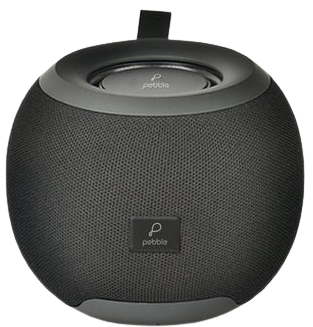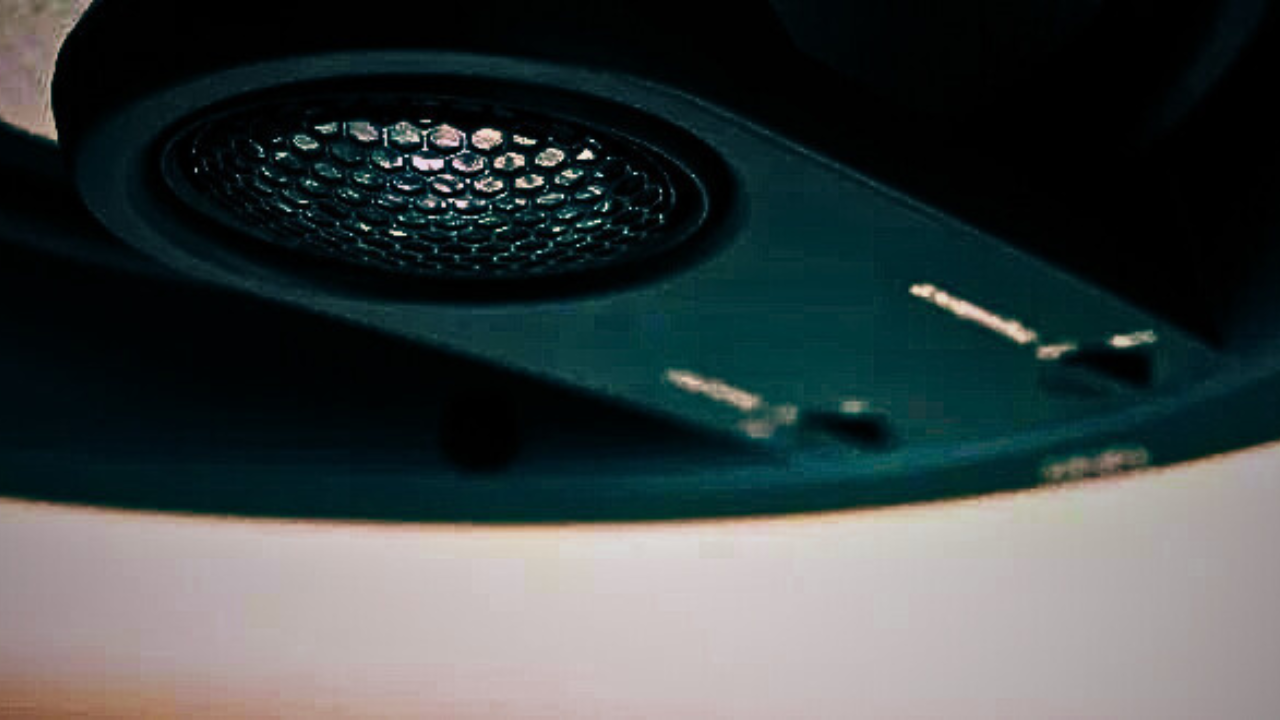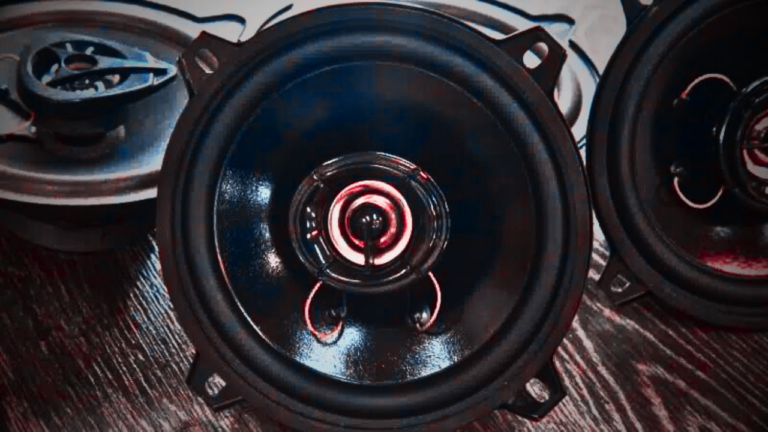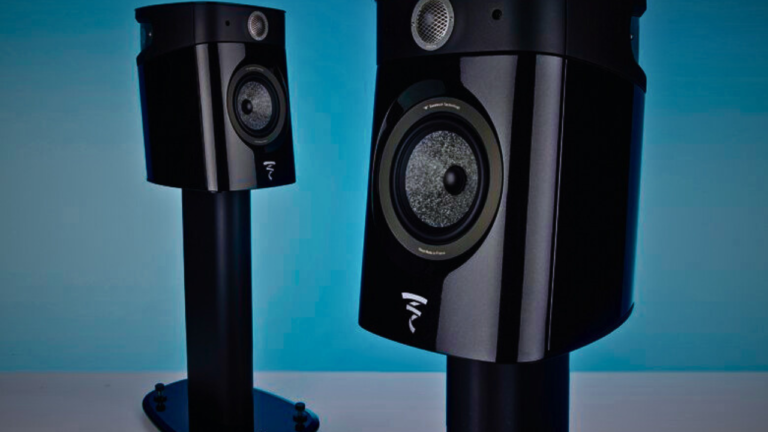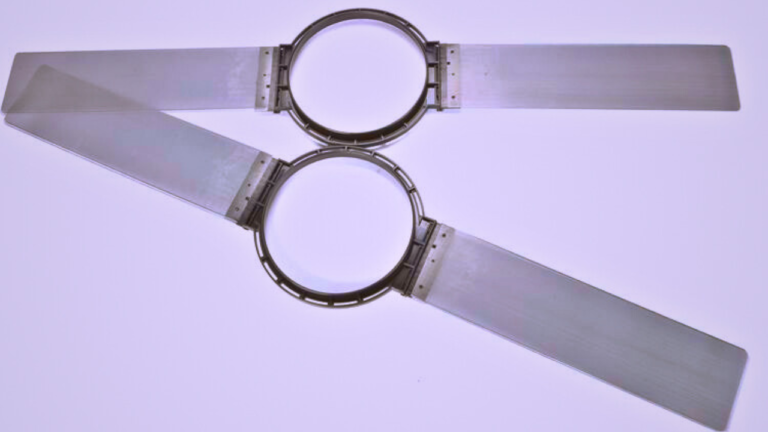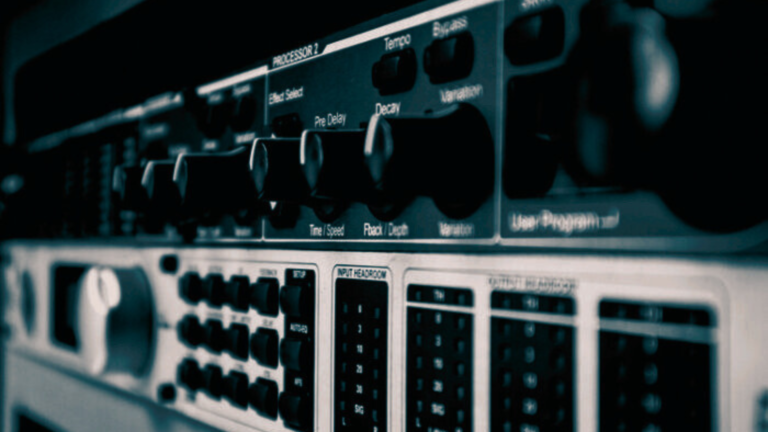How To Connect In Ceiling Speakers To Receiver?
You might be thinking about how to upgrade your home entertainment setup, and in-ceiling speakers connected to a receiver could just be the answer! Delivered with high-quality sound while maintaining a sleek and unnoticeable presence, these speakers offer an unparalleled surround sound experience. But you may stumble upon the question of how to connect these in-ceiling speakers to your receiver.
Well, don’t worry because you’re in the right place, starting in the right way. The process is much simpler than you might think, and I am here to help you navigate through it.
Before We Dive Into The Details:
It’s important to note that, while this guide has been created with the utmost precision and clarity, it’s always a good idea to consult your user manual or manufacturer with specific questions related to your respective product. This is because the details and specifications can vary slightly from one product to another.
- Positioning: The location of your receiver and speakers plays a crucial role in the overall sound quality and system performance. Is the receiver within a reasonable range? Are the speakers strategically placed?
- Surround Sound Configuration: You’ll have to determine your desired layout and how many speakers you plan to install. This could be a basic left and right two-speaker setup or a more advanced 7.1-channel surround sound system.
- Wiring: This could be a daunting part for many. Figuring out how to safely and correctly setup the required wiring while ensuring the aesthetic of the room is undisturbed—we’ve got you covered there too.
Without further ado, let’s delve into the guide, and I will show you step by step how to connect your in-ceiling speakers to your receiver for the ultimate at-home cinema experience.
Read also: What Is A Good Frequency Range For Speakers?
What are the different types of in-ceiling speakers available?
We’re all about choices when it comes to in-ceiling speakers because, hey, everyone’s audio preferences and room compositions are unique. Let’s give you a ‘heads-up’ on the different varieties you’re likely to come across:
- Coaxial speakers: These versatile chaps consist of a single driver that outputs both the high (‘the tweeter’) and low (‘the woofer’) frequencies. This simplistic design is ideal for background music in general living spaces.
- Component Speakers: These are more specialized, allowing you to strategically place the tweeter apart from the woofer. This can provide a broader range of sound and is excellent for dedicated music or home theater rooms.
- Stereo Input Speakers: Possessing two tweeters and a single woofer, these speakers can play both the left and right audio channels from a single point. This type of speaker is ideal for rooms where you may not have space for two separate speakers.
- Single Stereo Speakers: Easily mistaken with the stereo input speakers, these guys are great for smaller spaces as they combine two tweeters and two woofers into a single unit to provide stereo sound. Perfect for a cozy kitchen or a small study, perhaps?
- Subwoofers: Every audiophile’s best friend! In-ceiling subwoofers are excellent at enriching your audio experience by delivering those punchy, deep bass sounds you crave. Meant to work in harmony with your other speakers, they lend a veritable tour de force to your home theater or music setup.
Now we’re getting it, right? Customizing your in-ceiling speaker setup becomes a breeze when you understand the function and appropriate application of each type. So, scoop up that receiver, and let’s move you one step closer to audio nirvana!
What is the ideal placement for in-ceiling speakers?
First and foremost, it’s essential to understand that strategic placement can significantly affect your in-ceiling speakers’ acoustic performance. Imagine being in a movie theater where you’re wrapped in the perfect blend of sounds—that’s what we’re aiming to emulate with your in-ceiling speakers and receiver.
So on to the big question: where should you ideally place your in-ceiling speakers?
- Firstly, consider your room’s acoustics and layout: Think about where you’ll be mostly seated while listening to the speaker system. It could be your living room couch or your dining room table. Take note of the room’s dimensions and decide where the left and right channels should be. This generally should align with where your TV or screen is.
- Secondly, speaker placement for stereo or surround sound: If you’re setting for stereo (2-speakers setup), a rule of thumb is to place the speakers at equal distances from your listening spot for a balanced sound. For a surround sound system (which includes more than two speakers), you will need to add speakers to the rear and possibly the sides of the room, depending on the number of channels.
- Finally, in-ceiling speaker distance: In-ceiling speakers are ideally placed 1.5–2.5 meters apart from each other to avoid gaps in the sound coverage. At the same time, remember to place them at least 3 feet away from the nearby walls to limit sound reflections.
While it may feel a little confusing right now, don’t worry. With a little time and experimentation, you’ll find the perfect setup for your in-ceiling speakers.
And remember, ultimately, the perfect placement is one that delivers the sound quality you love!
What is the difference between a 2-way and a 3-way in-ceiling speaker?

When it comes to in-ceiling speakers, you will come across terms like ‘2-way’ and ‘3-way’. These terms may seem a bit technical, but they’re really about the design of the speaker and how it delivers sound. Let’s break it down to make it easier to understand.
2-way Speakers:
A 2-way speaker consists of two components: a tweeter and a woofer. The tweeter is designed to reproduce high-frequency sounds (like the chirping of birds or the sizzle of symbols), while the woofer takes care of the lower frequencies (like the bass drums or the growl in a rock singer’s voice). Combine these two, and you get a speaker that covers a wide range of sounds, offering a balanced and dynamic audio output.
3-way Speakers:
The 3-way speaker, on the other hand, has three components: a tweeter, a mid-range driver, and a woofer. The tweeter covers high frequencies, the mid-range driver tackles midfield sounds (like vocals or acoustic guitar), and the woofer manages the low-end frequencies. The addition of the mid-range driver provides a more distinct and detailed sound, especially in songs or movies where midfield sounds dominate.
So, which one is better? It’s not really a matter of one being superior to the other, but more a question of what fits your needs better. A 2-way speaker can be perfect for most general listening scenarios, while a 3-way speaker caters to those seeking a wider frequency range and more detailed sound.
| 2-way speaker | 3-way speaker | |
|---|---|---|
| Components | Tweeter and Woofer | Tweeter, Mid-Range Driver, and Woofer |
| Sound Coverage | Wide range of sounds | Wider frequency range with more detailed sound |
| Ideal for | General listening scenarios | Music or movies with dominant midfield sound |
So weigh your needs, consider the audio you typically consume, and then decide whether a 2-way or 3-way in-ceiling speaker fits your space and matches your receiver.
Read also: How To Test Speakers Without An Amplifier?
What are the necessary tools and equipment to connect in-ceiling speakers to a receiver?
Before you start your adventure into transforming your space into an audio powerhouse, it’s crucial to ensure you have all the right tools and equipment on hand. Let’s take a look at what you would ideally need:
- Wire Stripper: Used to cut and strip the protective coating on wires. This tool enables you to connect the speaker wire to both the receiver and the speaker itself.
- Speaker Wire: This, as the name suggests, forms the connection between your receiver and the in-ceiling speakers. The choices vary, from 14-gauge to 18-gauge types, depending on the distance between receiver and speaker.
- Screwdriver: A handy tool required to secure speakers into place. Depending on the make and model of your in-ceiling speakers, you might need a Philips head or a flathead screwdriver.
- Ladder: Let’s not forget that we’re dealing with in-ceiling speakers, which means some elevation is required. Always ensure you have a robust and stable ladder to perform the installation safely.
- Drill and Drill Bits: Needed for creating the speaker holes in your ceiling. The bit size will vary depending on the size of your speakers.
- Stud Finder: An essential tool that helps to avoid drilling into studs, vents, or electrical wiring hidden behind the ceiling.
- Protective Gear: When working with hand tools and conducting potential dust-producing tasks, safety glasses, gloves, and a dust mask can protect you from potential hazards.
Having the right tools for such a project can ensure a smooth, safe, and effective speaker installation process. Remember, always follow the instructions of both the speaker and receiver manufacturers to optimize your system’s sound and longevity.
What are the common challenges faced when connecting in-ceiling speakers to a receiver?
When establishing a connection between in-ceiling speakers and a receiver, you may be confronted with challenges that could make the process slightly tricky. But don’t worry! Being aware of these challenges beforehand can ensure you’re prepared and make the entire procedure smoother. Here’s what you might run into:
- Wire Management: One of the significant challenges is handling and managing all the wires involved. Long wires extending from the receiver to in-ceiling speakers can be cumbersome and visually unappealing.
- Access to the Ceiling: Unlike freestanding speakers, in-ceiling speakers require access to the interior of the ceiling. This poses a significant challenge if the ceiling is not easily accessible or if it risks damage to the ceiling’s integrity.
- Speaker Placement: Optimal speaker placement is essential for the best sound effects, but settling on the best location may be difficult, especially with in-ceiling speakers. Challenges may arise when structurally important parts of your home restrict your placement choices.
- Technical Knowledge Required: To connect in-ceiling speakers to a receiver, some basic knowledge of sound systems and wiring is required. This can be a daunting task for those not well-versed in these areas.
While these challenges may seem intimidating, preparation and planning can help overcome them. You may also engage the services of a professional to ensure a frustration-free experience. Remember, the end result is an immersive audio experience that’s well worth the effort.
Conclusion
And finally, we’ve arrived at the end of our journey on how to connect in-ceiling speakers to a receiver. We’ve walked through the different types of in-ceiling speakers, the perfect placement, the distinct characteristics between a 2-way and a 3-way in-ceiling speaker, as well as the necessary tools and potential challenges you might face in the process. It can seem like a daunting task, but with the right knowledge at your disposal, we believe you’re more than ready to undertake this project yourself.
Remember:
- Take Care of the Basics: Before anything else, you should ensure that your in-ceiling speakers match your receiver in terms of output and impedance. They need to be in sync for the best performance.
- Equipment at the ready: Keep your tools close. You should ideally have a pair of wire strippers, a screwdriver, and a drill for this process.
- Effort Equals Results: Take time to make precise measurements for speaker placement and patiently run the wires. The extra effort here results in superior sound quality.
- Overcome Challenges: If you run into difficulties, like hard-to-reach spots or wiring issues, don’t be discouraged. These are common challenges that can usually be solved with a bit of ingenuity and patience. The process can be a bit tricky, but the reward of high-quality sound is well worth it.
In conclusion, connecting your in-ceiling speakers to your receiver might seem challenging at first, but it’s perfectly doable with the right knowledge and tools. I hope this article has provided you with a comprehensive guide to assist in your DIY audio project. By now, you should be one step closer to that perfect audio experience.
Enjoy your newly installed, in-ceiling speakers. Happy listening!
Read also: How To Install Speakers In Car Trunk?
FAQs
Can I connect any in-ceiling speaker to any receiver?
Generally, in-ceiling speakers are compatible with a wide array of receivers. However, it’s important to check the specific impedance and other specifications of the speakers to ensure they match the receiver.
Do I need an amplifier for my in-ceiling speakers?
In most cases, you would need an amplifier, as it boosts the audio signal from your receiver, ensuring optimal performance of your in-ceiling speakers. But this depends on the power of your receiver and the needs of your speakers.
Are Wi-Fi or Bluetooth-enabled in-ceiling speakers better?
Both have their merits. Bluetooth in-ceiling speakers offer easy setup, while Wi-Fi-enabled speakers provide better sound quality and coverage area. Consider your specific needs and choose accordingly.
What’s the role of a crossover in an in-ceiling speaker setup?
A crossover is essential because it divides the audio signal into different frequency bands to ensure that each speaker handles the frequencies it’s best suited for. This leads to better sound quality.
How many in-ceiling speakers should I install for a surround-sound setup?
This heavily depends on your room size and configuration. A basic setup would at least require 2 speakers; however, for a richer audio experience, 4 or more speakers are recommended.
Should I buy in-ceiling speakers with adjustable tweeters?
Adjustable tweeters allow you to direct the sound in a specific direction. If you wish to customize the sound dispersion in your room, speakers with adjustable tweeters would be a good buy.
Is professional help necessary to install and connect in-ceiling speakers?
If you’re comfortable with basic DIY tasks, connecting and installing in-ceiling speakers can be done by yourself. However, if you’re not quite confident about it, professional help is always useful to prevent damage.
How do I determine the power rating of my in-ceiling speakers?
The power rating is usually mentioned in the product specifications. It generally indicates the range of power the speakers can handle without distorting the quality of sound.
What is the optimal distance between two in-ceiling speakers?
There’s no hard and fast rule for this; the optimal distance would depend on your room size and desired sound distribution. As a rough guide, keeping them between 8 and 12 feet apart works well for most rooms.
Do in-ceiling speakers provide good bass?
Just like any other speaker, in-ceiling speakers can indeed provide good bass. However, if you’re a bass enthusiast, supplementing your setup with a subwoofer could be a great idea.

Hey there! I’m Henry Jack, the voice behind speakerrealm.com, your ultimate destination for everything speakers. Whether you’re a seasoned audio enthusiast or just starting to explore the world of sound, you’ve come to the right place.
At Speaker Realm, I dive deep into the realm of speakers, bringing you comprehensive reviews, insightful guides, and the latest trends in the industry. From floor-standing behemoths to compact bookshelf wonders, I cover it all.
I’m passionate about helping you find the perfect speakers to elevate your audio experience. Whether you’re setting up a home theater, upgrading your sound system, or just looking for some quality audio gear, I’ve got you covered.
But Speaker Realm isn’t just about technical specs and performance metrics—it’s also about the art and science of sound. I explore topics like acoustic design, speaker technology, and the impact of audio on our lives.
So whether you’re a casual listener or a hardcore audiophile, join me on this journey through the world of speakers. Let’s turn up the volume and explore the endless possibilities of sound together at speakerrealm.com!
